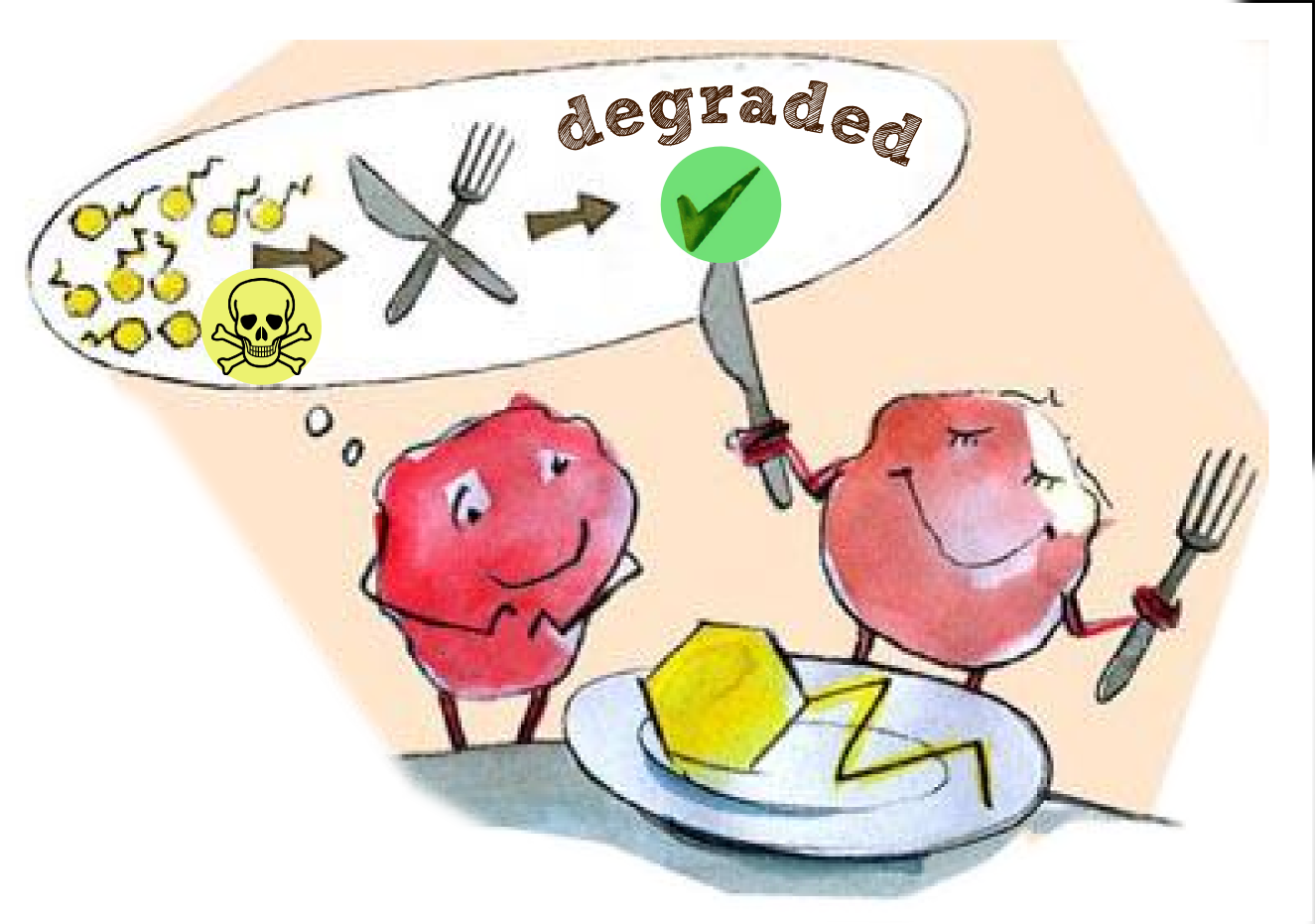Team:TU-Munich/Project/Biodegradation
From 2013.igem.org
Biodegradation of Xenobiotics
Biodegradation is defined as "a process by which microbial organisms transform or alter the structure of chemicals introduced into the environment" (U.S. Environmental Protection Agency, 2009). We work with this concept by degrading or transforming noxious substances in waste water into non-hazardous compounds. These substances, such as antibiotics, hormones or pesticides are not removable by common waste water treatment plants, but there exist enzymes from natural catabolic mechanisms in different microorganisms to inactivate them. To utilize these enzymes we integrated them into a plant as a self-sustaining sedentary organism to create a functional water filter system. To illustrate this approach we chose three potent enzymes:
- The Erythromycin esterase, which degrades macrolides, a persistant group of antibiotics
- The Laccase BPUL, which degrades several noxious substances, for example the artificial hormone ethinyl estradiol, the main ingredient of contraception pills
- The Catechol-2,3-dioxygenase, catalyzing the degradation of aromatic pollutants, which occur in pesticides and insecticides
Erythromycin Esterase (EreB)
Laccase (Bacillus pumilus)
Catechol Dioxygenase (XylE)
As ever more third world countries around the globe experience a rapid industrialization without establishing proper environmental practices as well as big companies outsourcing their production facilities in order to avoid expensive sewage treatment the problem of water pollution is more urgent then ever. In order to tackle this problem we were looking for a suitable pollutant which our moss could degrade resulting in a better overall water quality. The organic compund catechol, or 1,2-dihydroxybenzene, met all our criteria as it was a byproduct or raw material in several processes in the chemical industry as well as a stable product of several natural pathways in microbia degrading catechol-like pollutants.
References:
http://www.ncbi.nlm.nih.gov/pubmed/6327079 Edens et al., 1984
- http://www.ncbi.nlm.nih.gov/pubmed/6327079 Edens et al., 1984 Edens, L., Bom, I., Ledeboer, A. M., Maat, J., Toonen, M. Y., Visser, C., and Verrips, C. T. (1984). Synthesis and processing of the plant protein thaumatin in yeast. Cell, 37(2):629–33.
 "
"




AutoAnnotator:
Follow us:
Address:
iGEM Team TU-Munich
Emil-Erlenmeyer-Forum 5
85354 Freising, Germany
Email: igem@wzw.tum.de
Phone: +49 8161 71-4351